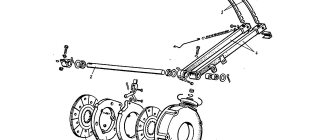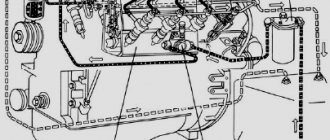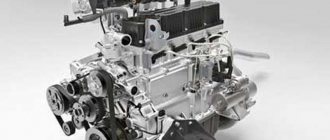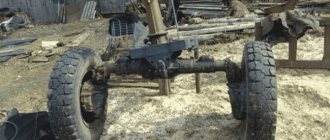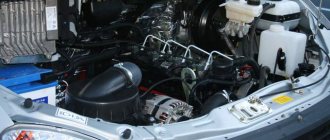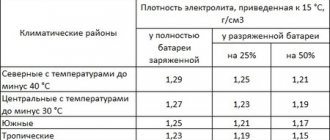Here I summarize the information on the fuel system of the Business gazelle with a Cummins engine. I immediately warn the copyright holders, if you copy it into your blogs, do not be lazy to put a link to the original source with the text, that is, a link to this entry!
Нttp://www.drive2.ru/users/solex.../288230376152119355/#post Now this already applies to representatives of the Gazelle forum and the Gazelle forum with Cummins! Scheme of fuel movement in the system
Scheme of fuel movement:
Once again I warn the copyright holders, if you copy into your blogs, do not be lazy to put a link to the original source with the text, that is, a link to this entry! www.drive2.ru/users/solex…/288230376152119355/#post Now this already applies to representatives of the Gazelle forum and the Gazelle forum with Cummins!
Solutions to the problem
First you need to obtain permission to re-equip the fuel part of the car. In this case, passage through customs will be difficult, since according to the law, the fuel supply should not exceed 10 liters from the figure declared by the manufacturer.
Possible options for improving and increasing the capacity:
- Installation of an additional fuel tank.
- Installation of a larger tank.
- Equipping the car with several additional containers.
The latter option is used extremely rarely, as it complicates the refueling process and is fraught with a large fine when crossing the border.
Standard containers
The standard version of the Gazelle can be equipped with a plastic 60-liter tank or an aluminum equivalent with a capacity of 70 liters. On average, the fuel reserve is enough for about 500 kilometers. The tank is durable and rarely requires repairs. The disadvantages of containers include small capacity.
A supply of cans of gasoline helps to partially solve the problem. However, it is not always convenient to refuel between populated areas. Some craftsmen increase the volume of the existing tank, but this is illegal, since interference with the fuel system is not allowed.
Site about SUVs UAZ, GAZ, SUV, CUV, crossovers, all-terrain vehicles
In the instrument cluster on the Gazelle NEXT car there is a warning lamp for the presence of water in the fuel (with an orange filter). The lamp lights up briefly when you turn the key in the instrument and starter switch (ignition switch> to position “I” and goes out. Constantly burning of the lamp means the presence of water in the fuel filter. If the lamp is continuously burning, immediately stop the engine. Then drain the water from the fuel filter of the Cummins engine yourself. ISF2.8 or contact a service station.
Removing fuel injection pump gazelle cummins 2.8
The Cummins ISF 2.8 piston melted and the gasket was replaced, which no one undertakes to change. Read more
Installation of fuel injection pump gazelle cummins 2.8 continuedRead more
Simple fuel injection pump repair from GazelleNextRead more
Cummins 2.8 problems with fuel.Read more
Injection pump Gazelle Cummins 2.8 on Business and Next 4990601 0445020119 BoschMore details
Gazelle with Cummins engine, timing belt installationMore details
Operation of the Cummins ISF 2.8L engine with fuel injection pump MTZ-82More details
Cummins 2.8 - Engine quieter than hours after repair | Precise timing adjustmentMore details
Gazelle Cummins diesel runs unevenly, shakes and has trouble startingRead more
Types and design of the Cummins fuel pump
The location of the pump sections allows fuel pumps to be divided into several types:
- in-line injection pumps (sections are located one after another and each supplies fuel to its own cylinder);
- multi-section (or V-shaped) fuel pumps;
- high-pressure fuel distribution pumps (in which one pump section supplies several cylinders with fuel).
It should be noted that in-line high-pressure fuel pumps have proven to be the most reliable.
An all-mode regulator (also called a centrifugal regulator) allows fuel injection under pressure in any engine operating mode that the driver determines.
And the key task is to supply strictly measured portions of fuel for injection through nozzles into the cylinder and distribute the fuel among the cylinders by a plunger pair. Excess fuel pumped up by the high-pressure fuel pump is discharged back into the tank through the drain fitting.
When the ignition key is turned to the “off” position, the solenoid valve shuts off the fuel supply to the diesel engine power unit, thereby stopping its operation. The pump mechanism is driven by the rotation of the camshaft of the gas distribution mechanism.
Understanding how the high-pressure fuel pump works helps you understand the principle of its operation, as well as diagnose possible breakdowns and carry out timely maintenance and repairs.
Causes of malfunction and characteristic signs of defects in Cummins injection pumps
As with any other mechanical equipment that contains rubbing or rotating parts, high-pressure fuel pump components are subject to mechanical wear.
This phenomenon causes deformation of parts or play of mating parts and assemblies, reducing the mechanical strength and reliability of pump parts. Also, mechanical wear causes weakening of the mutual connections of pump parts and changes in their location relative to each other.
The main feature of Kamins fuel systems is that diesel fuel is sprayed into the engine cylinder under very high pressure, which reduces fuel consumption and at the same time increases power.
Valdai with a Kamens engine has minimal fuel consumption with a significant amount of power. So with the engine power set to 154 hp. and at a constant speed of 80 kilometers per hour, fuel consumption is 15 liters. Read more here.
Another common cause of fuel injection pump malfunction is clogged channels and contamination of pump parts resulting from the use of low-quality fuel. This reason not only significantly impairs the performance of the fuel pump, but also greatly affects the operation of the diesel engine as a whole.
In order for the repair of the fuel system to be cheaper, and the malfunction of one component not to affect the functioning of others, it is very important to promptly identify malfunctions in the operation of a particular component or mechanism.
If you pay attention to the car, then during its use you will notice characteristic signs of fuel injection pump failure. These include difficulties in starting the engine or a change in the nature of the noise when the fuel pump operates.
How to remove the fuel pump Gazelle Cummins
The high pressure fuel pump is used in the fuel supply system of diesel engines.
Serial production of fuel injection pumps was launched in 1927 at Cummins enterprises. The main task of the fuel pump is to supply strictly measured portions of fuel into the cylinders under high pressure. Moreover, the amount of fuel supplied must correspond to the load on the engine at any given time.
Depending on the type, the fuel pump supplies fuel under pressure either to each cylinder or to a pressure accumulator, from which fuel enters the engine cylinders.
Maintenance of the GAZelle Next fuel system
Bleeding the power system
It is necessary to bleed the engine power system after replacing fuel filters and during other work related to the removal of parts of the power system, as well as when air gets into the system
To complete the task you will need a 12 key and a rag.
Place a piece of cloth (rags) around the fine filter.
Unscrew the plug to bleed air.
Press the manual booster pump button several times until fuel begins to come out of the hole.
Removing water from the fuel filter
The instrument cluster contains a warning light for the presence of water in the fuel.
If this lamp does not go out after starting the engine, it means there is water in the fuel.
In this case, you need to stop the engine and drain the water from the fuel filter.
We install a container under the drain valve to drain the fuel.
Open the drain valve by turning the wing nut counterclockwise 2 turns.
To make draining easier, unscrew the plug on the filter housing cover.
We drain the fuel from the filter along with the sediment.
After this, press the boost pump button several times until the fuel completely flows out of the filter.
Close the tap by turning it clockwise.
After this, we pump the power system as described above.
Screw the bleeder plug into place.
How to check the fuel filter water sensor?
The operation of the device is based on the difference in the physical density of water and diesel fuel - since water is heavier than diesel fuel, a special float with a built-in magnet sinks in the fuel, but floats on the surface of the water.
The procedure for checking the water sensor for proper operation is carried out in several stages:
- The control circuit of the device is checked - fast movement of the fuel level indicator from the minimum to maximum position indicates the serviceability of the device, slow movement indicates incorrect operation.
- The next step is to drain the water from the fuel filter.
- Next, the engine's operating condition is checked. If it is faulty, the causes of the problems should be identified and eliminated; if it works correctly, the engine can be turned off.
- After turning off the engine, the water level sensor is disconnected from the fuel filter. The indicator connector terminals are connected using a special adapter wire to the body ground, and then the ignition key is turned to the On position and the water indicator in the filter is checked again.
- If the indicator does not light up, this means that there is a break in the wire between the sensor and the filter that needs to be repaired. If there is no gap, you need to turn off the engine and remove the water level indicator from the fuel filter and check the operation of the float. Its incorrect movement indicates the need to replace the water level indicator.
- If the float moves correctly, you need to move it a little while the engine is on. If the indicator turns on when the float is in the up position, this means that the sensor is working. Otherwise (if the indicator is constantly on or off, regardless of the trajectory of the float), the device must be replaced.
Dismantling, cleaning and checking Cummins fuel injection pumps
Before removing the fuel pump, be sure to consider the following points.
- Never open the fuel injection pump on a hot engine. Fuel may enter the exhaust manifold, which may cause a fire.
- Clean all fittings before disassembly as dirt may damage the fuel system.
Preparatory operations: First, disconnect the batteries, then disconnect and remove the drain and fuel supply lines.
Withdrawal. Disconnect the fuel line from the injection pump and loosen the support brackets. Next, disconnect the ECU fuel control valve harness.
To remove the rear gear drive: First remove the 3 flange nuts that secure the fuel pump and remove the injection pump from the timing gears.
When cleaning the fuel pump with acids, solvents, or other chemical liquids, be sure to follow the manufacturer's recommendations. To avoid injury, wear safety glasses and protective clothing.
Use cleaning products that are gentle on aluminum and do not allow them to get into the fittings as dirt and other particles can cause damage to the fuel system. After cleaning, dry the injection pump with compressed air.
Engine assembly carried out at any of the enterprises that are part of the Cummins Inc concern is carried out in full accordance with the design and technical documentation.
The first signal that a piston revision is necessary is the so-called “burnout”, that is, increased oil consumption in the engine. The most common cause of this is wear on the piston rings. Read about the causes of piston malfunctions and its repair here.
Check the gear and drive shaft, as well as the O-ring for damage. If damaged, parts should be replaced. Inspect the location of the O-ring for damage and clean all surfaces with existing burrs.
Check the fuel pump hole, timing gear housing, and mounting studs for cracks and replace any damaged parts if necessary.
